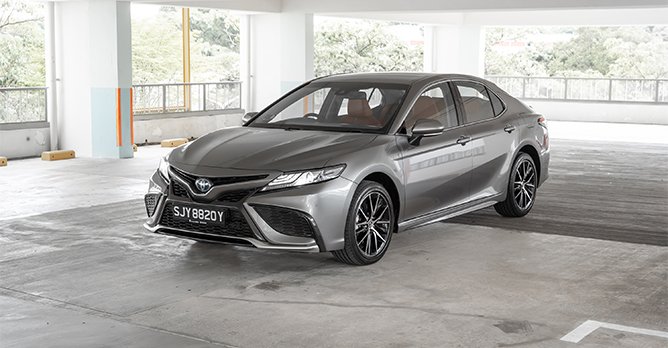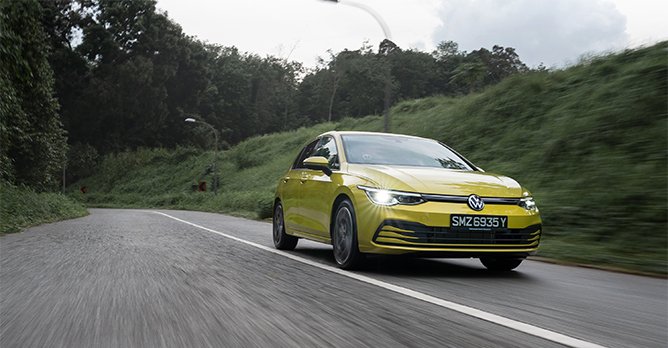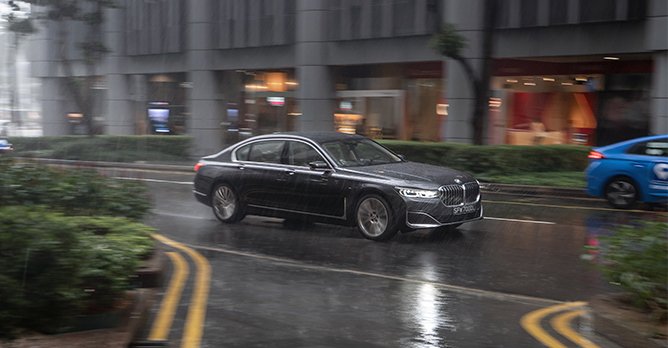Death by COE Cat B: Larger premiums work well to delineate luxury cars - unless they're not supposed to be luxury cars
22 Oct 2021|17,566 views
Back in 2013, as Singaporeans apparently became more affluent, the proportion of continental car registrations was steadily creeping skyward.
So the Transport Ministry - without the precarious state of our national carrier, or negotiations for Vaccinated Travel Lanes weighing on its mind - took a long, hard look at Singapore's automotive scene and thought, "Hmmm, we must do something about the rising number of BMWs and Mercs on our roads."
As it goes in Singapore, the answer had to lie in the taxes. In October, the Ministry announced - to much excitement - that it would be consulting various stakeholders to re-evaluate and update the existing COE system. Would we finally levy surcharges for households with multiple cars? Would COEs, anchor tenant of The SG Multiplex of Exorbitant Car Taxes, finally be tied to the market values of cars instead of their engine capacities?
But we know how the story unfolds.
The cheaper Category A - for mass market models - had previously welcomed all cars with engine capacities of up to 1,600cc. As it happened with the changes finally announced, it was now kicking out those with power outputs above 130bhp (or 97Kw).
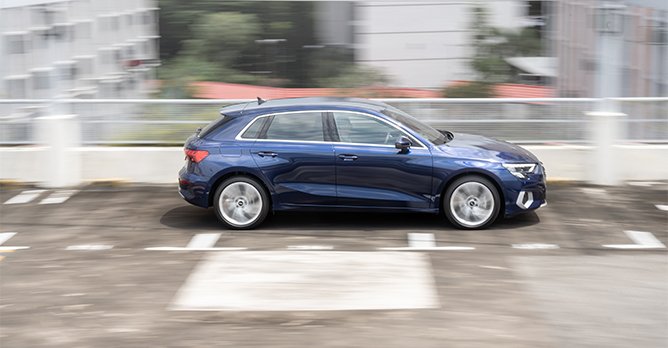
Seven years later, in an era of low emissions, $80k Cat B COEs, and where efficiency is the sovereign ruler of all things automotive, it is perhaps more relevant than before to ask where and how we have been drawing the line between luxury and non-luxury. In the process, what sort of social equity - a curious concept to bring up at all with car ownership - are we now driving towards?
A tale of two hybrids: Slipping through the cracks of the original system
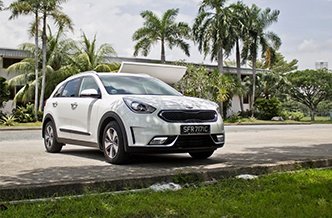 | 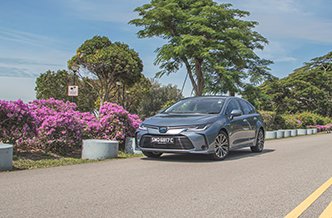 |
Not convinced? Consider this question: What could possibly justify a massive price difference between the Kia Niro Hybrid SX (the more expensive variant) and the Toyota Corolla Altis Hybrid?
Fine, they look and drive different - one is a SUV-wannabe, the other, an unperturbed, unpretentious sedan. One could also make the case for Japanese versus Korean; we'd argue, though, that they're pretty much on the same plane these days. Above all, however, under various aspects of statistical consideration, the lines that divide both cars seriously start to blur.
The Niro Hybrid's OMV stands at $29,308. The Altis Hybrid's, just a hair's breadth lower at $29,232. The Niro boasts 129bhp. The Altis Hybrid? 121bhp. And while the Niro apparently has better fuel economy on paper, our brief stints with both cars yielded numbers that were largely the same - approximately 20km/L.
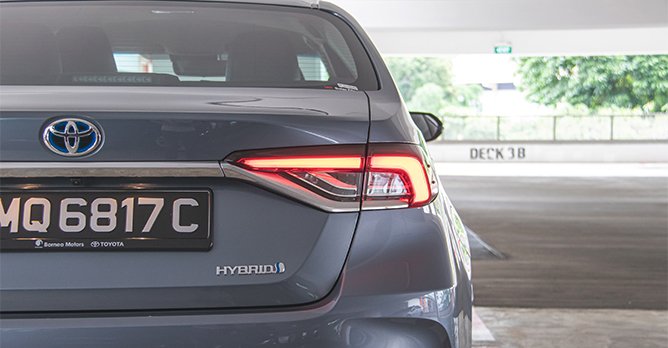
The culprit, of course, is one pesky, immovable figure. The Altis Hybrid uses a 1.8-litre petrol-electric engine, compared to the Niro Hybrid's 1.6-litre. That magic number - 1.8 - is all that stands between the Altis Hybrid and the hallowed Category A classification.
Just like that, the Altis Hybrid manages a horrific leap of $30,000 above its 1.6-litre, petrol-powered twin. Even more mind-boggling? It also somehow becomes more expensive than the basic trim level of bigger brother, the Toyota Camry Hybrid, which sits an entire segment above.
You could argue that Toyota could avoid this simply by using a smaller engine. But then the easy rejoinder is that no carmaker develops a car specifically for the Singaporean car market; we're not the U.S. or China. By so rigidly differentiating cars between "mass market" or "luxury" status - off a single engine figure - models not intended for the latter category inevitably wind up there anyway. Think the Prius too, which was thrust into PHV fleets when it could have been widely adopted for personal use.
But before resolving this pain point, the 2014 revisions brought even more intricacies into the picture.
A new age of higher power, lower emissions: Suffocated by the dated grip of the revised system
 | 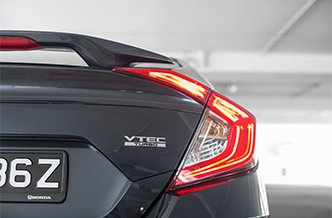 |
Among the most vocal critics of the change back in 2014 was German engineering firm, Bosch, which appealed to the LTA that capping power outputs would deter carmakers from bringing in newer and cleaner models. Rather, Bosch feared it would incentivise them to hold on rather insensibly to older engines - less powerful but also less efficient - in order to stay below the power ceiling.
For instance, the Honda Civic's debut in 2016 was particularly eventful because it also marked the introduction of Honda's gleaming, all-new 1.5-litre turbocharged engine. Most markets immediately lapped it up.
Singapore, however, was also offered the Civic with the previous generation's R16 1.6-litre naturally aspirated engine - just slightly updated - in order to make the cut for Category A. (This elicited confusion, naturally, from our neighbours). The turbocharged 1.5-litre was clearly the superior choice - both in terms of lowered emissions and enhanced power. But the less advanced, less efficient, and most important of all, less powerful 1.6-litre became the bestseller.
In a more recent example, Volkswagen also decided it would introduce a Mild Hybrid drivetrain for the latest generation of its bestseller, the Mk8 Golf - par for the course of lower emissions. This was splendid news to buyers all over the world: A combination of 148bhp and a real-world fuel economy of 16.3km/L (from our test drive in mixed conditions) would indubitably crown the Golf once more as the go-to car for dynamism and practicality, blending power and efficiency in perfect harmony.
But not to a Singaporean.
Because Category A also demands that power output is limited to 130bhp, the latest Golf was rejected from the club - forced to shuffle over dejectedly to the Category B corner. Although sub-130bhp variants of the Golf are offered internationally, they only come with manual gearboxes - scarier to Singaporeans than Cat B - and will thus never make it here. Correspondingly, Volkswagen Singapore remains incapable of pulling off its previous hat trick of Cat A engines.
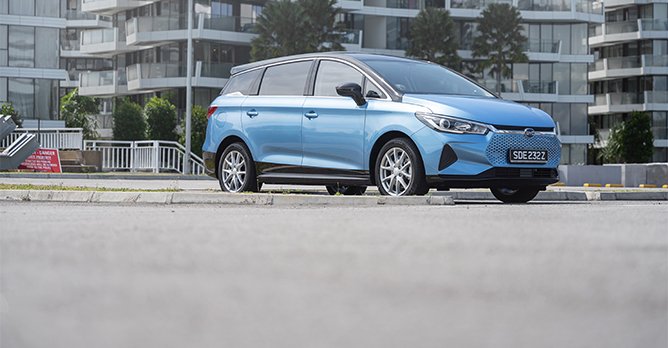
Since Cat A states that power output cannot exceed 97kW, electric cars - fitted with drivetrains that are by nature more powerful and torquey than gas-powered cars - have also been largely relegated from the budget league. Among the existing electric passenger cars on the market, only the BYD e6 manages to duck below the ceiling, with its 70kW (97bhp) of power.
While various rebates have been introduced to reduce the higher market values of electric cars (we've painstakingly gone over this in detail once before, and shan't do so again for the sake of your sanity and ours), these are mitigating, not motivating, measures; an eventual zero sum game which simply cancels out taxes that technically don't need to exist anyway.
Electric cars resultantly retail at between $30,000 to $50,000 above the golden $100k mark. Again, they are forced to occupy the ambiguous, undesirable space between affordability and exorbitance - which invariably slants towards towards the latter.
Returning to the issue of social equity
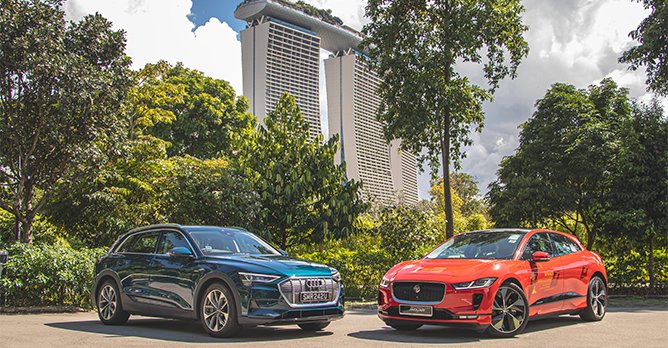
In the era of efficiency, such logic feels flimsier than ever. Is the Volkswagen Golf, competitor to the Mazda3 Hatchback anywhere but in Singapore, a luxury car? Is the MG5 EV, so explicitly crafted for the modest family guy/soccer mum, a luxury car? Conversely, is the Mercedes-Benz GLB180, resident of the Cat A ceiling, a mass market model?
It's important to constantly reconsider what social equity means in the context of car ownership. If models with more efficient drivetrains and lower emissions remain far out of reach to the average consumer simply because of their engines/power, what sort of equity exactly are we achieving? Norway has demonstrated with lucid and agile policies that prices can be tuned to favour eco-friendlier cars (we never said cars are eco-friendly...). It's not rocket science.
Legitimate luxury models will thrive, as they have for a while now. Past a certain price point, $30,000 feels more like a small step than a huge leap. Premiums rising $10,000 in a single bidding round? No biggie.
But liminal, "transitional" models, still very sensitive to price fluctuations, will continue to fight the big boys in the B ring. And they will continue to suffer. Moving from $460,000 to $490,000, (the difference between the BMW 730Li and 740Li) feels very different to moving from $115,000 to $145,000 (the difference between a petrol and hybrid Altis).
Back in 2013, LTA's press release also said this about the new COE system: "To keep pace with market trends and technological improvements, LTA will review the criteria every few years and consider if adjustments are necessary."
In 2021, the trend towards EVs is unmistakeable. And technological improvements will continue to favour and prioritise efficiency, rather than engine capacity or raw power. It is highly possible, if not unavoidable, that the Category A crowd will increasingly thin out in the process.
And so, with bated breath, we continue to keep our eyes peeled eagerly to see if considerations and reviews for necessary adjustments are on the horizon. But as we do so, here's a moment of silence first: For the Altis Hybrids, Golf Mk8s and electric cars still unfairly caged within Category B.
Back in 2013, as Singaporeans apparently became more affluent, the proportion of continental car registrations was steadily creeping skyward.
So the Transport Ministry - without the precarious state of our national carrier, or negotiations for Vaccinated Travel Lanes weighing on its mind - took a long, hard look at Singapore's automotive scene and thought, "Hmmm, we must do something about the rising number of BMWs and Mercs on our roads."
As it goes in Singapore, the answer had to lie in the taxes. In October, the Ministry announced - to much excitement - that it would be consulting various stakeholders to re-evaluate and update the existing COE system. Would we finally levy surcharges for households with multiple cars? Would COEs, anchor tenant of The SG Multiplex of Exorbitant Car Taxes, finally be tied to the market values of cars instead of their engine capacities?
But we know how the story unfolds.
The cheaper Category A - for mass market models - had previously welcomed all cars with engine capacities of up to 1,600cc. As it happened with the changes finally announced, it was now kicking out those with power outputs above 130bhp (or 97Kw).

Seven years later, in an era of low emissions, $80k Cat B COEs, and where efficiency is the sovereign ruler of all things automotive, it is perhaps more relevant than before to ask where and how we have been drawing the line between luxury and non-luxury. In the process, what sort of social equity - a curious concept to bring up at all with car ownership - are we now driving towards?
A tale of two hybrids: Slipping through the cracks of the original system
The Kia Niro Hybrid and Corolla Altis Hybrid are - or should be - quite similar as value propositions
To begin, the original classification system (pre-2014) was already flawed in its own way by disregarding cars which could neither be classified as "budget" nor "luxury". Not convinced? Consider this question: What could possibly justify a massive price difference between the Kia Niro Hybrid SX (the more expensive variant) and the Toyota Corolla Altis Hybrid?
Fine, they look and drive different - one is a SUV-wannabe, the other, an unperturbed, unpretentious sedan. One could also make the case for Japanese versus Korean; we'd argue, though, that they're pretty much on the same plane these days. Above all, however, under various aspects of statistical consideration, the lines that divide both cars seriously start to blur.
The Niro Hybrid's OMV stands at $29,308. The Altis Hybrid's, just a hair's breadth lower at $29,232. The Niro boasts 129bhp. The Altis Hybrid? 121bhp. And while the Niro apparently has better fuel economy on paper, our brief stints with both cars yielded numbers that were largely the same - approximately 20km/L.

The culprit, of course, is one pesky, immovable figure. The Altis Hybrid uses a 1.8-litre petrol-electric engine, compared to the Niro Hybrid's 1.6-litre. That magic number - 1.8 - is all that stands between the Altis Hybrid and the hallowed Category A classification.
Just like that, the Altis Hybrid manages a horrific leap of $30,000 above its 1.6-litre, petrol-powered twin. Even more mind-boggling? It also somehow becomes more expensive than the basic trim level of bigger brother, the Toyota Camry Hybrid, which sits an entire segment above.
You could argue that Toyota could avoid this simply by using a smaller engine. But then the easy rejoinder is that no carmaker develops a car specifically for the Singaporean car market; we're not the U.S. or China. By so rigidly differentiating cars between "mass market" or "luxury" status - off a single engine figure - models not intended for the latter category inevitably wind up there anyway. Think the Prius too, which was thrust into PHV fleets when it could have been widely adopted for personal use.
But before resolving this pain point, the 2014 revisions brought even more intricacies into the picture.
A new age of higher power, lower emissions: Suffocated by the dated grip of the revised system
The unnecessary introduction of a second, older engine variant of the Honda Civic in 2016 exemplified the exact concerns voiced by Bosch
Among the most vocal critics of the change back in 2014 was German engineering firm, Bosch, which appealed to the LTA that capping power outputs would deter carmakers from bringing in newer and cleaner models. Rather, Bosch feared it would incentivise them to hold on rather insensibly to older engines - less powerful but also less efficient - in order to stay below the power ceiling.
For instance, the Honda Civic's debut in 2016 was particularly eventful because it also marked the introduction of Honda's gleaming, all-new 1.5-litre turbocharged engine. Most markets immediately lapped it up.
Singapore, however, was also offered the Civic with the previous generation's R16 1.6-litre naturally aspirated engine - just slightly updated - in order to make the cut for Category A. (This elicited confusion, naturally, from our neighbours). The turbocharged 1.5-litre was clearly the superior choice - both in terms of lowered emissions and enhanced power. But the less advanced, less efficient, and most important of all, less powerful 1.6-litre became the bestseller.
In a more recent example, Volkswagen also decided it would introduce a Mild Hybrid drivetrain for the latest generation of its bestseller, the Mk8 Golf - par for the course of lower emissions. This was splendid news to buyers all over the world: A combination of 148bhp and a real-world fuel economy of 16.3km/L (from our test drive in mixed conditions) would indubitably crown the Golf once more as the go-to car for dynamism and practicality, blending power and efficiency in perfect harmony.
But not to a Singaporean.
Because Category A also demands that power output is limited to 130bhp, the latest Golf was rejected from the club - forced to shuffle over dejectedly to the Category B corner. Although sub-130bhp variants of the Golf are offered internationally, they only come with manual gearboxes - scarier to Singaporeans than Cat B - and will thus never make it here. Correspondingly, Volkswagen Singapore remains incapable of pulling off its previous hat trick of Cat A engines.

Since Cat A states that power output cannot exceed 97kW, electric cars - fitted with drivetrains that are by nature more powerful and torquey than gas-powered cars - have also been largely relegated from the budget league. Among the existing electric passenger cars on the market, only the BYD e6 manages to duck below the ceiling, with its 70kW (97bhp) of power.
While various rebates have been introduced to reduce the higher market values of electric cars (we've painstakingly gone over this in detail once before, and shan't do so again for the sake of your sanity and ours), these are mitigating, not motivating, measures; an eventual zero sum game which simply cancels out taxes that technically don't need to exist anyway.
Electric cars resultantly retail at between $30,000 to $50,000 above the golden $100k mark. Again, they are forced to occupy the ambiguous, undesirable space between affordability and exorbitance - which invariably slants towards towards the latter.
Returning to the issue of social equity

In the era of efficiency, such logic feels flimsier than ever. Is the Volkswagen Golf, competitor to the Mazda3 Hatchback anywhere but in Singapore, a luxury car? Is the MG5 EV, so explicitly crafted for the modest family guy/soccer mum, a luxury car? Conversely, is the Mercedes-Benz GLB180, resident of the Cat A ceiling, a mass market model?
It's important to constantly reconsider what social equity means in the context of car ownership. If models with more efficient drivetrains and lower emissions remain far out of reach to the average consumer simply because of their engines/power, what sort of equity exactly are we achieving? Norway has demonstrated with lucid and agile policies that prices can be tuned to favour eco-friendlier cars (we never said cars are eco-friendly...). It's not rocket science.
Legitimate luxury models will thrive, as they have for a while now. Past a certain price point, $30,000 feels more like a small step than a huge leap. Premiums rising $10,000 in a single bidding round? No biggie.
But liminal, "transitional" models, still very sensitive to price fluctuations, will continue to fight the big boys in the B ring. And they will continue to suffer. Moving from $460,000 to $490,000, (the difference between the BMW 730Li and 740Li) feels very different to moving from $115,000 to $145,000 (the difference between a petrol and hybrid Altis).
Back in 2013, LTA's press release also said this about the new COE system: "To keep pace with market trends and technological improvements, LTA will review the criteria every few years and consider if adjustments are necessary."
In 2021, the trend towards EVs is unmistakeable. And technological improvements will continue to favour and prioritise efficiency, rather than engine capacity or raw power. It is highly possible, if not unavoidable, that the Category A crowd will increasingly thin out in the process.
And so, with bated breath, we continue to keep our eyes peeled eagerly to see if considerations and reviews for necessary adjustments are on the horizon. But as we do so, here's a moment of silence first: For the Altis Hybrids, Golf Mk8s and electric cars still unfairly caged within Category B.
Thank You For Your Subscription.















